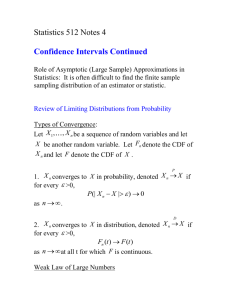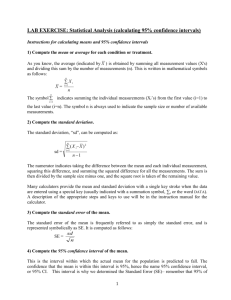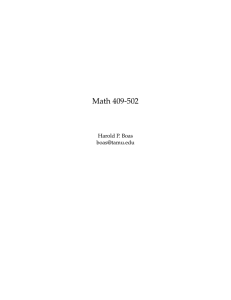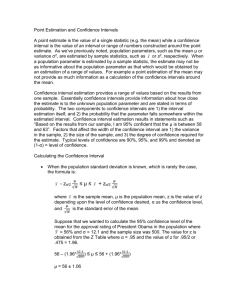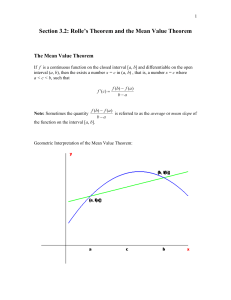Math 425-1
advertisement
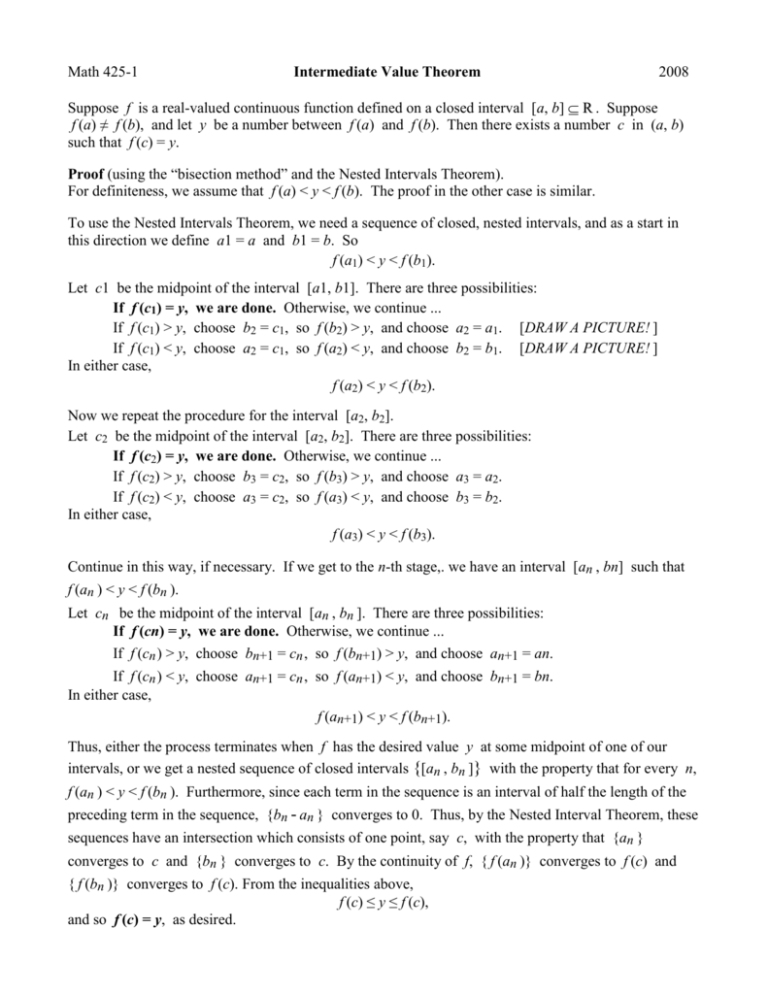
Math 425-1
Intermediate Value Theorem
2008
Suppose f is a real-valued continuous function defined on a closed interval [a, b] R . Suppose
f (a) ≠ f (b), and let y be a number between f (a) and f (b). Then there exists a number c in (a, b)
such that f (c) = y.
Proof (using the “bisection method” and the Nested Intervals Theorem).
For definiteness, we assume that f (a) < y < f (b). The proof in the other case is similar.
To use the Nested Intervals Theorem, we need a sequence of closed, nested intervals, and as a start in
this direction we define a1 = a and b1 = b. So
f (a1) < y < f (b1).
Let c1 be the midpoint of the interval [a1, b1]. There are three possibilities:
If f (c1) = y, we are done. Otherwise, we continue ...
If f (c1) > y, choose b2 = c1, so f (b2) > y, and choose a2 = a1. [DRAW A PICTURE! ]
If f (c1) < y, choose a2 = c1, so f (a2) < y, and choose b2 = b1. [DRAW A PICTURE! ]
In either case,
f (a2) < y < f (b2).
Now we repeat the procedure for the interval [a2, b2].
Let c2 be the midpoint of the interval [a2, b2]. There are three possibilities:
If f (c2) = y, we are done. Otherwise, we continue ...
If f (c2) > y, choose b3 = c2, so f (b3) > y, and choose a3 = a2.
If f (c2) < y, choose a3 = c2, so f (a3) < y, and choose b3 = b2.
In either case,
f (a3) < y < f (b3).
Continue in this way, if necessary. If we get to the n-th stage,. we have an interval [an , bn] such that
f (an ) < y < f (bn ).
Let cn be the midpoint of the interval [an , bn ]. There are three possibilities:
If f (cn) = y, we are done. Otherwise, we continue ...
If f (cn ) > y, choose bn+1 = cn , so f (bn+1) > y, and choose an+1 = an.
If f (cn ) < y, choose an+1 = cn , so f (an+1) < y, and choose bn+1 = bn.
In either case,
f (an+1) < y < f (bn+1).
Thus, either the process terminates when f has the desired value y at some midpoint of one of our
intervals, or we get a nested sequence of closed intervals {[an , bn ]} with the property that for every n,
f (an ) < y < f (bn ). Furthermore, since each term in the sequence is an interval of half the length of the
preceding term in the sequence, {bn - an } converges to 0. Thus, by the Nested Interval Theorem, these
sequences have an intersection which consists of one point, say c, with the property that {an }
converges to c and {bn } converges to c. By the continuity of f, { f (an )} converges to f (c) and
{ f (bn )} converges to f (c). From the inequalities above,
f (c) ≤ y ≤ f (c),
and so f (c) = y, as desired.
![The Average rate of change of a function over an interval [a,b]](http://s3.studylib.net/store/data/005847252_1-7192c992341161b16cb22365719c0b30-300x300.png)






